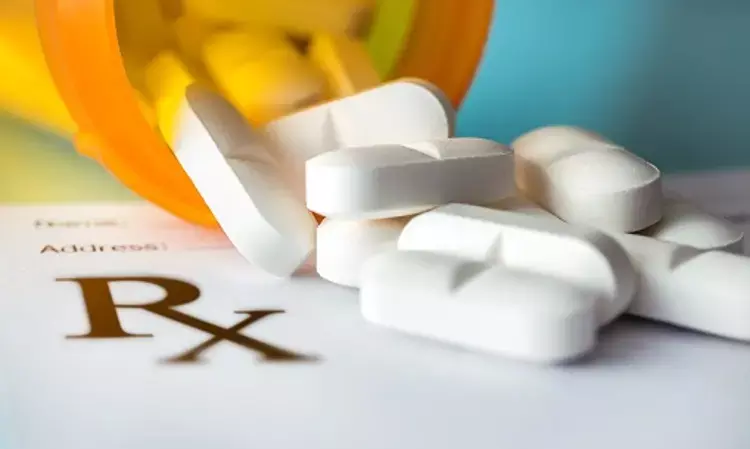- Home
- Medical news & Guidelines
- Anesthesiology
- Cardiology and CTVS
- Critical Care
- Dentistry
- Dermatology
- Diabetes and Endocrinology
- ENT
- Gastroenterology
- Medicine
- Nephrology
- Neurology
- Obstretics-Gynaecology
- Oncology
- Ophthalmology
- Orthopaedics
- Pediatrics-Neonatology
- Psychiatry
- Pulmonology
- Radiology
- Surgery
- Urology
- Laboratory Medicine
- Diet
- Nursing
- Paramedical
- Physiotherapy
- Health news
- Fact Check
- Bone Health Fact Check
- Brain Health Fact Check
- Cancer Related Fact Check
- Child Care Fact Check
- Dental and oral health fact check
- Diabetes and metabolic health fact check
- Diet and Nutrition Fact Check
- Eye and ENT Care Fact Check
- Fitness fact check
- Gut health fact check
- Heart health fact check
- Kidney health fact check
- Medical education fact check
- Men's health fact check
- Respiratory fact check
- Skin and hair care fact check
- Vaccine and Immunization fact check
- Women's health fact check
- AYUSH
- State News
- Andaman and Nicobar Islands
- Andhra Pradesh
- Arunachal Pradesh
- Assam
- Bihar
- Chandigarh
- Chattisgarh
- Dadra and Nagar Haveli
- Daman and Diu
- Delhi
- Goa
- Gujarat
- Haryana
- Himachal Pradesh
- Jammu & Kashmir
- Jharkhand
- Karnataka
- Kerala
- Ladakh
- Lakshadweep
- Madhya Pradesh
- Maharashtra
- Manipur
- Meghalaya
- Mizoram
- Nagaland
- Odisha
- Puducherry
- Punjab
- Rajasthan
- Sikkim
- Tamil Nadu
- Telangana
- Tripura
- Uttar Pradesh
- Uttrakhand
- West Bengal
- Medical Education
- Industry
Empagliflozin Improves Heart Failure with rEF in Nondiabetic patients: Study

In patients with type 2 diabetes, sodium-glucose cotransporter 2 inhibitors (SGLT2i) reduce the risk of hospitalization for heart failure by 30% to 35% and improve cardiac outcomes. In a recent study, researchers have found Empagliflozin an SGLP2i potentially improves cardiac outcomes and quality of life among nondiabetic patients with heart failure with reduced ejection fraction (HFrEF). The study findings were published in the Journal of the American College of Cardiology on January 19, 2021.
Previous clinical trial such as DAPA-HF trial and EMPEROR-Reduced trial have explained the heart failure benefits of SGLT2i to the realm of patients with heart failure with reduced ejection fraction (HFrEF). Of the utmost importance, these benefits in outcomes occur both in diabetic and nondiabetic patients. Researchers of the Mount Sinai hospital, New York hypothesized that SGLT2i would mitigate adverse left ventricular (LV) remodelling independently of diabetic status, which could explain their benefits in heart failure. Based on this hypothesis, they conducted a preclinical study, using a porcine model of heart failure which showed promising results. Therefore, they conducted EMPA-TROPISM (Are the "Cardiac Benefits" of Empagliflozin Independent of Its Hypoglycemic Activity) trial and assessed the effect of empagliflozin on LV function and volumes, functional capacity, and quality of life (QoL) in nondiabetic HFrEF patients.
It was a single-site, double-blind, randomized placebo-controlled trial in 84 nondiabetic HFrEF patients. Researchers randomly assigned the patients to receive either empagliflozin 10 mg daily or placebo for 6 months. The major outcome assessed was the change in LV end-diastolic and -systolic volume evaluated by cardiac magnetic resonance. Researchers also assessed the changes in LV mass, LV ejection fraction, peak oxygen consumption in the cardiopulmonary exercise test, 6-min walk test, and quality of life.
Key findings of the study were:
• On comparing empagliflozin with placebo, researchers have found that the empagliflozin was associated with a significant reduction of LV end-diastolic volume (−25.1 ± 26.0 ml) when compared with placebo (−1.5 ± 25.4 ml).
• They also found a reduction in LV end-systolic volume (−26.6 ± 20.5 ml vs −0.5 ± 21.9 ml for empagliflozin vs Placebo).
• They observed empagliflozin was associated with reductions in LV mass (−17.8 ± 31.9 g vs 4.1 ± 13.4 g) and LV sphericity, and improvements in LV ejection fraction (6.0 ± 4.2 vs −0.1 ± 3.9).
• They also noted that the empagliflozin was associated with improvements in peak oxygen consumption, oxygen uptake efficiency slope as well as in 6-min walk test and quality of life.
The authors concluded, "Empagliflozin administration to nondiabetic HFrEF patients significantly improves LV volumes, LV mass, LV systolic function, functional capacity, and quality of life when compared with placebo. Our observations strongly support a role for sodium-glucose cotransporter 2 inhibitors in the treatment of HFrEF patients independently of their glycemic status".
For further information:
Medical Dialogues Bureau consists of a team of passionate medical/scientific writers, led by doctors and healthcare researchers. Our team efforts to bring you updated and timely news about the important happenings of the medical and healthcare sector. Our editorial team can be reached at editorial@medicaldialogues.in.
Dr Kamal Kant Kohli-MBBS, DTCD- a chest specialist with more than 30 years of practice and a flair for writing clinical articles, Dr Kamal Kant Kohli joined Medical Dialogues as a Chief Editor of Medical News. Besides writing articles, as an editor, he proofreads and verifies all the medical content published on Medical Dialogues including those coming from journals, studies,medical conferences,guidelines etc. Email: drkohli@medicaldialogues.in. Contact no. 011-43720751


